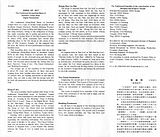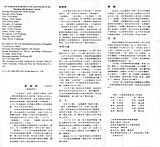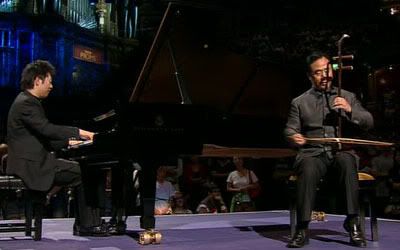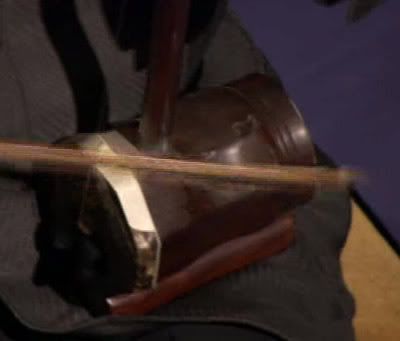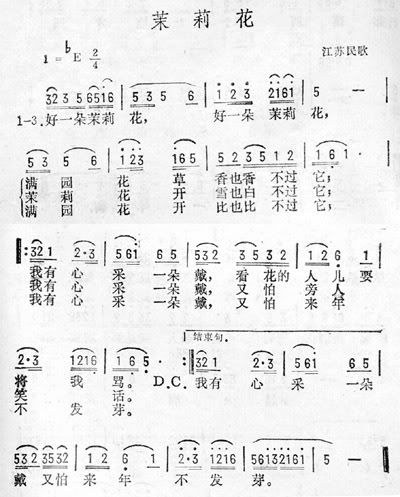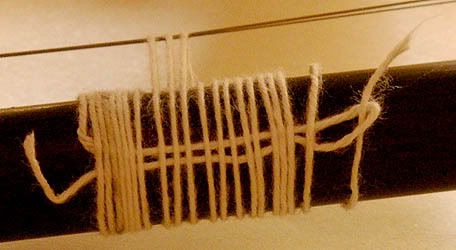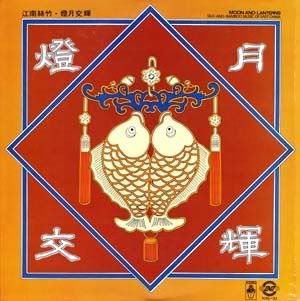
Jiangnan sizhu (Jiangnan silk and bamboo music):
Shanghai traditional ensemble - Moon and Lanterns, Jiangnan Sizhu, Bailey Record Co, NRS-33 (1981)
Album title, English: Moon and Lanterns, Jiangnan Sizhu (Silk and Bamboo Music of East China)
Chinese: dēng yuè jiāo huī, jiāngnán sīzhú 灯月交辉 江南丝竹
Performer: Shanghai traditional ensemble Silk and Bamboo Music group
shànghǎi mínzú yuètuán 上海民族乐团 (Shanghai traditional ensemble)
Bailey Record Co NRS-33 (1981) vinyl 12inch LP
A1. chūn jiāng huā yuè yè 春江花月夜 (Spring on a Moonlit River)
A2. yún qìng 云庆 (Celebrating the Cloud) (2.9 pc slow)
A2. yún qìng 云庆 (Celebrating the Cloud)
A3. xíng jiē 行街 (Wedding Procession) (2.9 pc slow)
A3. xíng jiē 行街 (Wedding Procession)
A4. dēng yuè jiāo huī 灯月交辉 (Moon and Lanterns)
B1. ní cháng qǔ 霓裳曲 (Rainbow Skirts)
B2. zhōng huā liù bǎn 中花六板 medium ornamented six beats
B3. huān lè gē 欢乐歌 (Song of Good Cheer)
B4. sān liù 三六 three six
shànghǎi mínzú yuètuán 上海民族乐团 (Shanghai traditional ensemble)
dízi 笛子, xiāo 箫: Zhèng Zhènghuá 郑正华
èrhú 二胡: Zhōu Hào 周皓
pípá 琵琶: Mǎ Shènglóng 马圣龙
yángqín 揚琴: Zhōu Huì 周惠
There are extra versions of A2. Yun Qing and A3. Xing Jie with the speed and pitch very slightly adjusted so that A=440hz, so 10 tracks in total.
Vinyl rip:
Link: 70MB, mp3, inc cover and notes (in English and Chinese)





